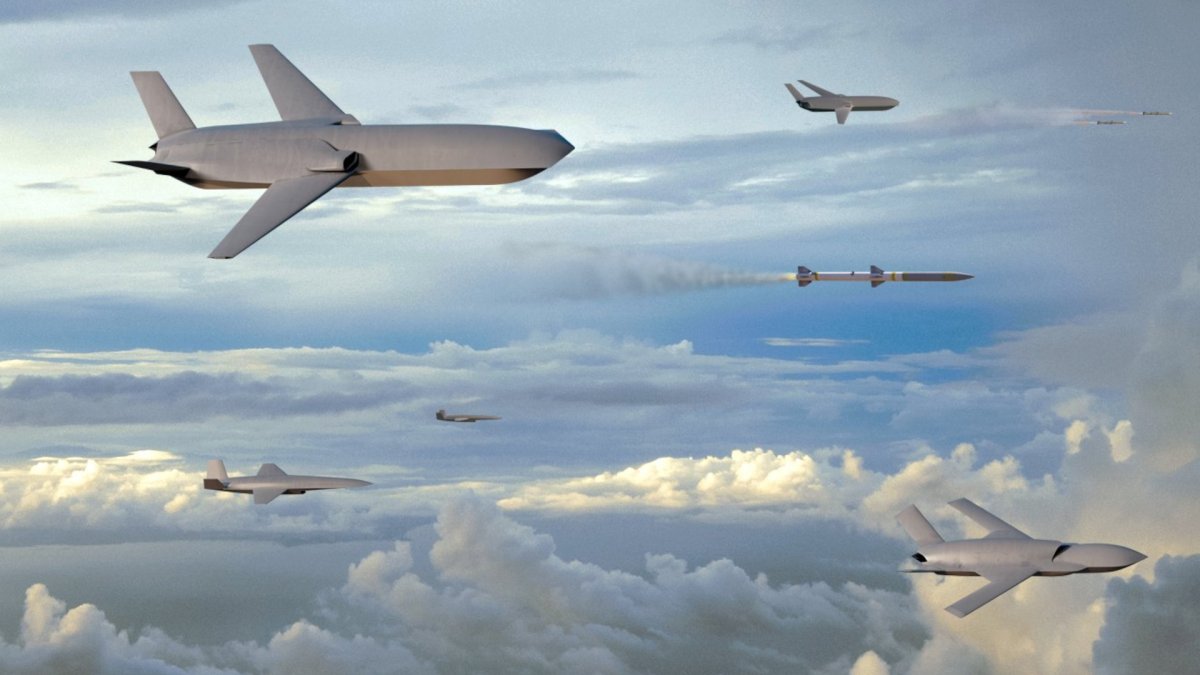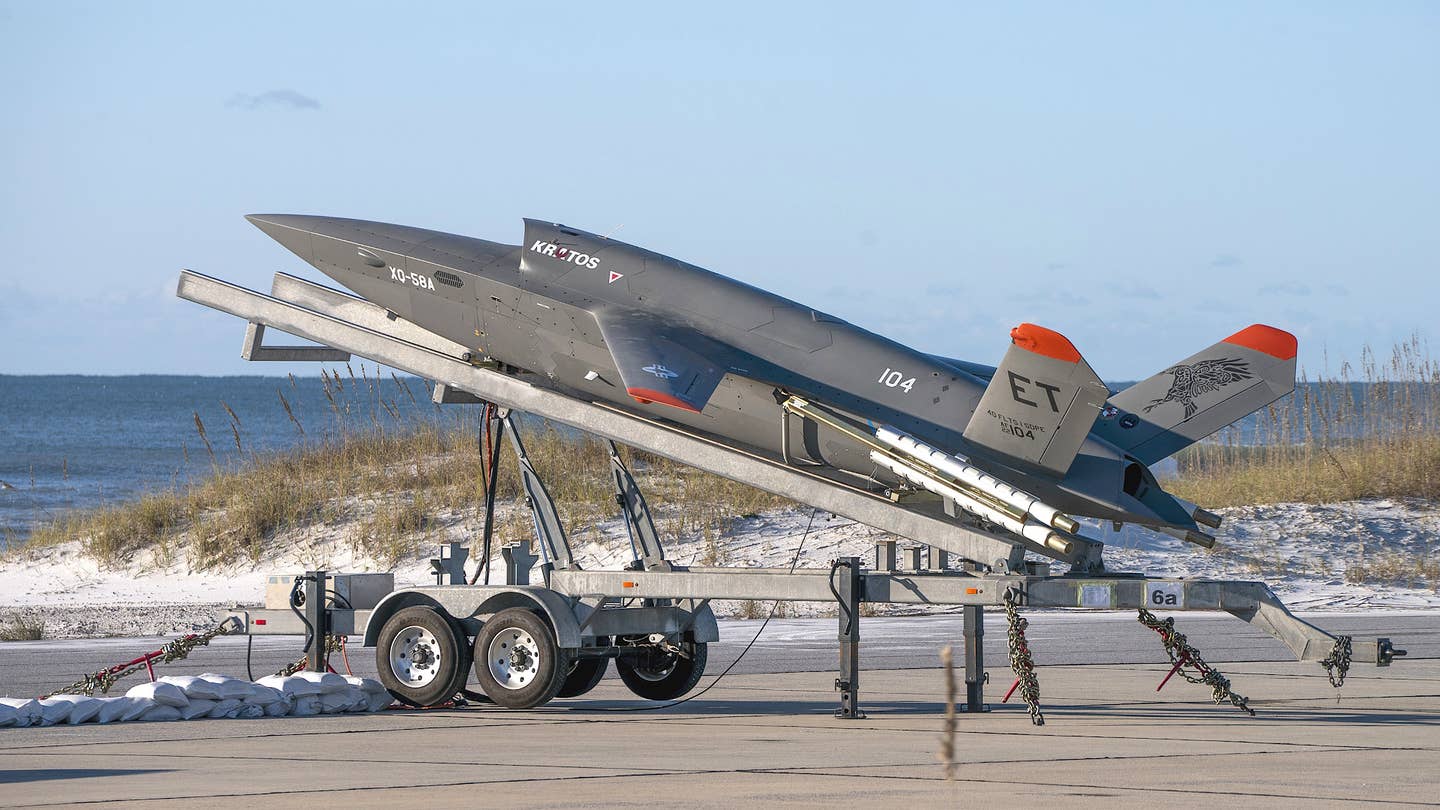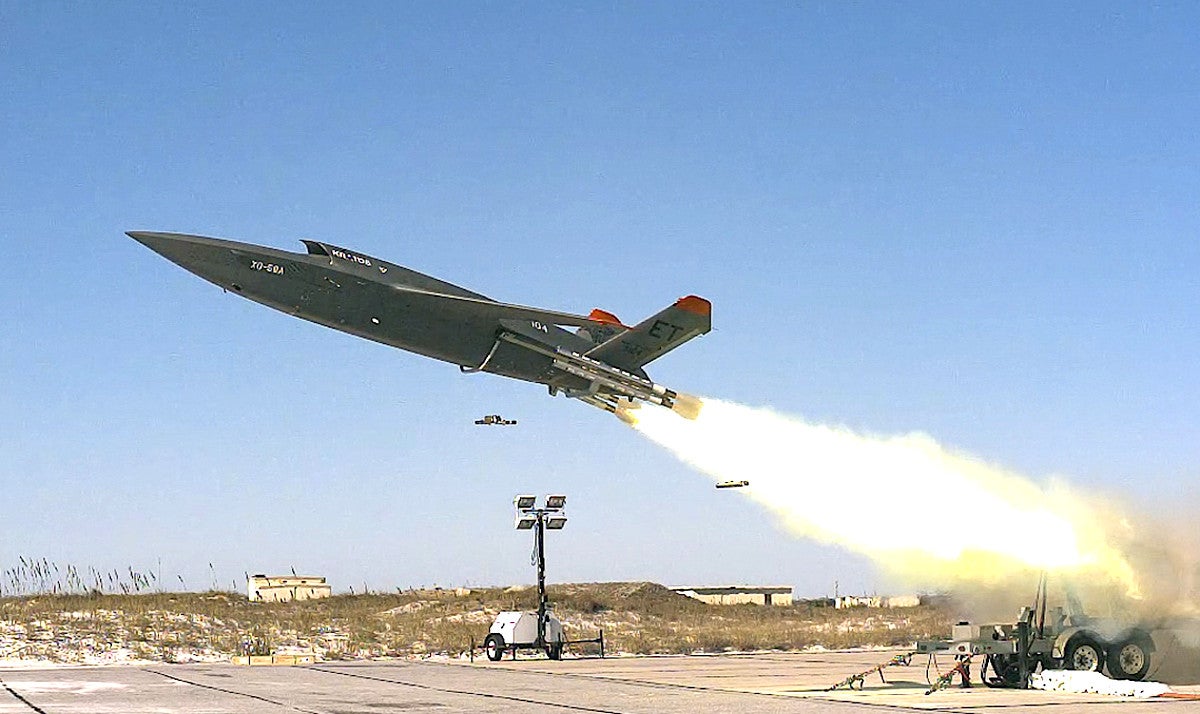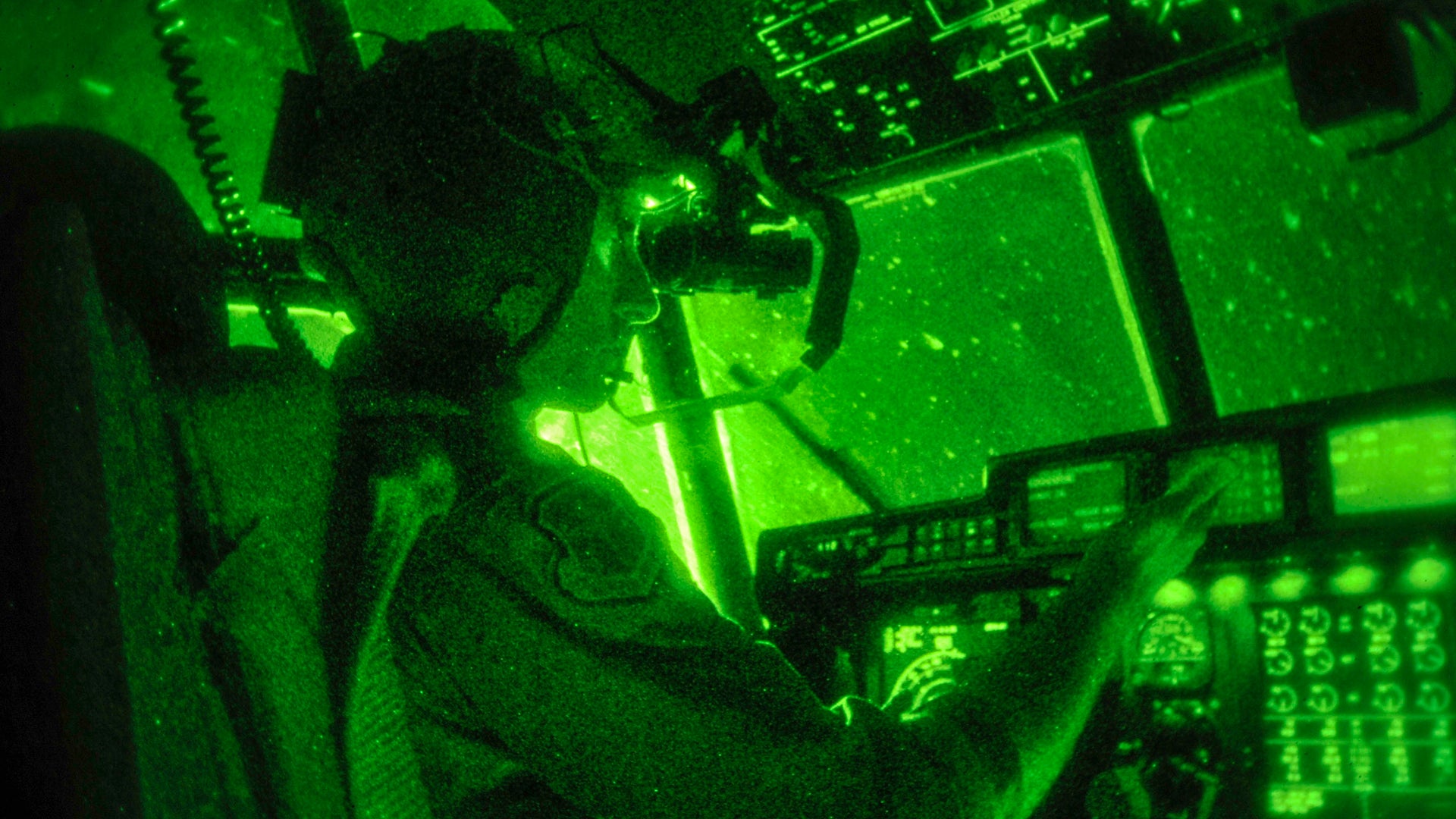- Reaction score
- 11,929
- Points
- 1,160
One of the ways I think CCA-type "wingmen" might have a big impact is on engagement ranges in air-to-air combat. The big push currently is for longer range AA missiles, many with lock-on-after-launch capability. In other words launching at extreme range without necessarily having a firm target lock from the launching platform and guiding your missile into the general location of the target where it can then lock on to the target.
If CCAs can be used as a screen to entice the enemy to launch their BVR missiles at them instead of their parent fighters, then the Allied fighters could move within range to get a firm lock with their long range missiles knowing that most of the enemy's own long range missiles have already been expended.
This might discourage attempting lock-on-after-launch attacks in case you're being suckered by drones. This could decrease the average engagement range as pilots will be wanting to wait until they get a firm lock on a confirmed target so they're not wasting their missiles. This might give further advantages to stealthy aircraft as well as those with the better sensors.
Then you add in lots of permutations once you start arming some of the CCAs because then you can't afford to ignore them. These technologies could really change the way that air combat works.
Even if the CCA is nothing more than an SPP (a Self Propelled Pylon for carrying the munitions that might otherwise be carried on the mothership) it will supply an enhanced capability in both the Air to Air and Air to Surface fights.
If the mothership had to carry the munitions then the extra energy required by the extra weight would come from the motherships own fuel load. The mothership's range is extended. Because it is lighter it is both more manoeuverable and thus more survivable.
If the CCA carries the munitions instead it doesn't have to carry a pilot (and all the systems necessary to keep the pilot alive at 50,000 feet). That weight can be converted to fuel load, again extending range.
The CCA can also fly more aggressively than a manned aircraft, pulling higher g's, like a missile. That makes the CCA more survivable.
The fact that they cost less than 5% of the mothership means they can be flown into the defences more aggressively. Enhancement of mothership survivability.
As well the CCA's mean more targets for the opposition to worry about. Enhancement of the package survivability.
If we consider a two ship F35 package (2x 80 MUSD plus 2x Pilots (priceless) flying in company with 4x XQ-58A Valkyries you end up with
2 aircraft potentially carrying
Armament
Avionics
- Guns: 1 × 25 mm (0.984 in) GAU-22/A 4-barrel rotary cannon, 180 rounds[N 16]
- Hardpoints:4 × internal stations, 6 × external stations on wings with a capacity of 5,700 pounds (2,600 kg) internal, 15,000 pounds (6,800 kg) external, 18,000 pounds (8,200 kg) total weapons payload, with provisions to carry combinations of:
- Missiles:
- Air-to-air missiles:
- AIM-9X Sidewinder
- AIM-120 AMRAAM
- AIM-132 ASRAAM
- AIM-260 JATM (To be integrated)[460]
- MBDA Meteor (Block 4, for F-35B)[173][461] (not before 2027)[462]
- Air-to-surface missiles:
- AGM-88G AARGM-ER (Block 4)
- AGM-158 JASSM[166]
- SPEAR 3 (Block 4, in development, integration contracted)[160][461]
- Joint Air-to-Ground Missile (JAGM)
- Air-to-surface/Anti-ship missiles:
- Joint Strike Missile (JSM, integration in progress)[463]
- Anti-ship missiles:
- AGM-158C LRASM[464] (being integrated)
- Bombs:
- Joint Direct Attack Munition (JDAM) series
- Paveway series laser-guided bombs
- Precision-guided glide bomb:
- AGM-154 JSOW
- GBU-39 Small Diameter Bomb (SDB)
- GBU-53/B StormBreaker (Small Diameter Bomb II)
- B61 mod 12 nuclear bomb[465] (being certified)
- AN/APG-81 AESA radar
- AN/AAQ-40 E/O Targeting System (EOTS)
- AN/AAQ-37 Distributed Aperture System (DAS) missile warning system
- AN/ASQ-239 Barracuda electronic warfare system
- AN/ASQ-242 CNI suite, which includes
- Harris Corporation Multifunction Advanced Data Link (MADL) communication system
- Link 16 data link
- SINCGARS
- An IFF interrogator and transponder
- HAVE QUICK
- AM, VHF, UHF AM, and UHF FM Radio
- GUARD survival radio
- A radar altimeter
- An instrument landing system
- A TACAN system
- Instrument carrier landing system
- A JPALS
- TADIL-J JVMF/VMF

Lockheed Martin F-35 Lightning II - Wikipedia
4 Aircraft with
Armament
- Hardpoints: 8: 2 weapon bays with 4 in each - with a capacity of up to 550 lb (250 kg),
- Bombs: JDAM, Small diameter bomb
Engineering:Kratos XQ-58 Valkyrie
The Kratos XQ-58 Valkyrie is an experimental stealthy unmanned combat aerial vehicle (UCAV) designed and built by Kratos Defense & Security Solutions for the United States Air Force Low Cost Attritable Strike Demonstrator (LCASD) program, under the USAF Research Laboratory’s Low Cost Attritable...
That equals 2x 4 internal hardpoints for the F35s for a total of 8 and 4x 2x 4 internal hardpoints for the XQ-58s for a total of 32 meaning a grand total of 40 internal hardpoints before the aircraft have to break "stealth" and load up the 12 external F35 hard points and the 8 external Valkyrie hard points.
The XQ-58 is designed to act as a "loyal wingman" that is controlled by a parent aircraft to accomplish tasks such as scouting, defensive fire, or absorbing enemy fire if attacked.[4] It features stealth technology with a trapezoidal fuselage with a chined edge, V-tail, and an S-shaped air intake.[3] The XQ-58 is capable of being deployed as part of a swarm of drones, with or without direct pilot control. Though the XQ-58 is capable of conventional take-offs and landings, it can also be launched from "nondescript launch modules", such as support ships, shipping containers, and semi-trailer trucks.[5][6] Kratos could produce between 250-500 Valkyries per year.[7]
Kratos XQ-58A Valkyrie Continues Successful Flights and Capability Evolution
SAN DIEGO, Feb. 23, 2023 (GLOBE NEWSWIRE) -- Kratos Defense & Security Solutions, Inc. (NASDAQ: KTOS), a leading National Security Solutions provider...
It seems that swarm technology is becoming mature - USAF, USN, USMC, the RAF and the RAAF all seem to be heavily invested in making it work in the near future.



















